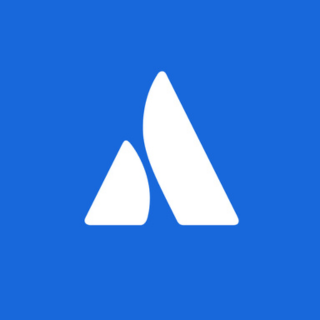Building Trust with Clients Using Transparent Open Source Tools
Build client trust through transparency. Learn how open source solutions improve security, collaboration, and credibility in professional service delivery.

Trust is everything in business. Whether you're delivering software services, managing client data, or collaborating on digital products, trust is the foundation that holds relationships together. In a world where customers are increasingly wary of opaque technologies and hidden practices, transparency has emerged as one of the most effective ways to earn—and keep—that trust.
This is where open source solutions shine. With open access to code, clear development histories, and thriving communities, open source tools help businesses build honest, accountable relationships with clients. They're not just practical tools—they’re signals of integrity.
In this post, we’ll explore how using transparent open source tools can deepen client relationships, improve communication, and position your business as a trustworthy partner.
1. Transparency Builds Confidence from Day One
When clients sign up to work with you, they’re taking a leap of faith. They may be trusting you with their intellectual property, sensitive data, or critical business processes. Naturally, they want reassurance that the tools you’re using are secure, stable, and aligned with their values.
Open Source as Proof of Openness
By using an open source solution, you can show your clients exactly what technology powers their project. There's no “black box.” The source code is publicly available. Clients can inspect it, review it, or even hire a third-party to audit it.
This kind of transparency builds confidence. It shows that you’re not hiding behind proprietary barriers and that you believe in collaborative, open development. It's an invitation for clients to engage, ask questions, and be part of the process—rather than simply handing off control.
2. Security Through Openness, Not Obscurity
One of the biggest concerns clients have—especially in regulated industries—is security. And understandably so. Data breaches, compliance failures, and software vulnerabilities can have serious consequences.
The Open Source Security Advantage
There’s a common misconception that open source tools are less secure because the code is publicly available. But in reality, transparency often leads to stronger security. When a tool is built by a community, it benefits from many sets of eyes—developers, researchers, and contributors who actively look for bugs and quickly patch them.
As a service provider or vendor, you can demonstrate to clients how the open source solutions you use are continuously tested and improved by a global network of professionals. You can point to public issue trackers, audit logs, and CVE histories. It’s a level of visibility that closed software simply can’t match.
By explaining the open source security model to clients, you not only ease their fears—you empower them with knowledge.
3. Fostering Collaboration and Shared Ownership
Clients want to feel like collaborators, not just customers. They want to see their input reflected in the final product. With open source tools, it’s easier to involve them meaningfully in the development process.
Enabling Participation Through Open Tools
Many open source platforms are designed to support collaboration by default. Clients can comment on GitHub issues, suggest improvements, and even contribute directly if they have technical expertise. They get real-time updates, access to changelogs, and insight into how the project is evolving.
This creates a stronger sense of partnership. When you build on an open source solution, you’re telling your clients: We’re in this together. You’re not just delivering a service—you’re co-creating something of value.
This approach strengthens relationships and encourages long-term collaboration built on mutual respect.
4. Demonstrating Ethical and Sustainable Business Practices
Today’s clients care about more than just results. They want to work with ethical companies that support fair, sustainable, and inclusive practices. Using open source tools is a great way to demonstrate that your business operates with those values.
Supporting the Commons
By choosing an open source solution over a closed, proprietary system, you’re supporting a model that values openness, accessibility, and community contribution. You’re participating in a global ecosystem where innovation is shared and knowledge is free.
Clients notice this. Especially in sectors like education, nonprofit, healthcare, and sustainability, using open source reflects a commitment to transparency and ethical technology.
Even in highly competitive industries, showing that you prioritize openness can set you apart and attract clients who value trust and long-term vision.
5. Improving Client Autonomy and Reducing Vendor Lock-In
One major concern clients have is being “locked in” to a specific vendor or system. Proprietary software often comes with restrictions—on customization, pricing, and data portability—that can make switching providers difficult and costly.
Open Source = Flexibility and Freedom
When you build client projects on an open source solution, you give them the flexibility to take their project wherever they need. If they choose to part ways, they’re not stuck with a closed system they can’t manage.
This autonomy actually increases client trust. Paradoxically, by making it easier for clients to leave, you give them more reasons to stay.
Clients appreciate businesses that don’t trap them, but instead empower them with choices and transparency. It builds goodwill and positions you as a partner—not just a provider.
6. Showing Technical Credibility and Long-Term Reliability
Finally, using open source tools is a strong indicator of technical maturity. It shows that your team is plugged into the broader developer ecosystem, keeps up with industry trends, and is confident enough to work with customizable, sometimes complex technologies.
Open Source as a Signal of Expertise
When clients see that you're using a well-established open source solution—like Docker, React, Kubernetes, or PostgreSQL—they recognize that you're not just using the latest fad. You're choosing proven, scalable tools backed by active communities and long-term support.
This builds trust in your technical choices and signals that you're not just delivering for today, but planning for tomorrow.
Final Thoughts: Trust Begins with Transparency
In business, trust isn’t built overnight. It’s the result of consistent actions, open communication, and thoughtful choices. Using transparent open source solutions is one of those choices—one that tells your clients: We have nothing to hide.
By embracing openness in your tech stack, you’re not only adopting powerful, flexible tools—you’re also aligning your business with honesty, collaboration, and ethical responsibility.
The result? Deeper client relationships, stronger partnerships, and a reputation built on trust.



























































































































































